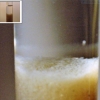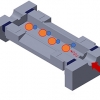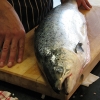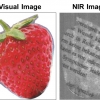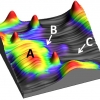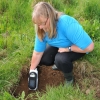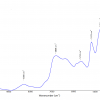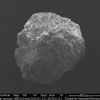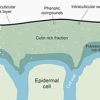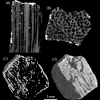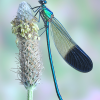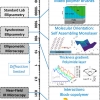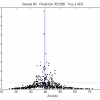Articles
Infrared spectroscopy and chemometrics to evaluate paper variability in document dating
Spectroscopy is widely used in forensics, but the determination of the age of documents was one application I had not considered. With a huge variety of papers and inks available, each with their own ageing profiles, and with such ageing depending on environmental factors, the determination of the age of a document is not straightforward. However, infrared spectroscopy and chemometrics may have the answer.
Activated sludge settling analysis using a near infrared optoelectronic device: overview and application to wastewater treatment
Jacques Thierie’s article raises a seemingly impossible observation: that in some cases, transparency can exceed 100 %.
Infrared ion spectroscopy: a bioanalytical tool for the identification of unknown small molecules
Nick Polfer gives an excellent introduction to the recent technique of infrared ion spectroscopy. Ions held in the ion trap of a mass spectrometer can be probed with a tuneable light source, and its photodissociation studied as a function of the photon frequency. Nick believes that the technique will make an impact in small molecule analysis, such as metabolites, drugs and classes of molecules containing many isomers.
What developments do you need to work more efficiently?
Tony Davies continues his quest to find out what you all need to work more efficiently. You will remember that in the last issue, Tony introduced his survey to discover what developments were needed in spectroscopy by readers. Some of the initial responses are explored, and Tony finds that he has opened a “can of worms”.
Multimodal imaging of cells and tissues: all photons are welcome
Different spectroscopic techniques have been combined to provide additional and complementary information for decades. Increasingly, this is being expanded beyond just two techniques and may include spatial/imaging information as well. All of which bring their own challenges. In “Multimodal imaging of cells and tissues: all photons are welcome”, David Perez-Guaita, Kamila Kochana Anja Rüther, Phillip Heraud, Guillermo Quintas and Bayden Wood report an example of these new approaches. They look at the use of infrared, Raman and X-ray fluorescence spectroscopies to obtain combined imaging data of whole algal cells and discuss how to overcome the challenges.
Combining teaching chemometrics with attenuated total reflection–infrared spectroscopy and food authentication
Colette Germon, Tony Davies and Paul Jones look at “Combining teaching chemometrics, with attenuated total reflection–infrared spectroscopy and food authentication”. They describe a teaching project based around the detection of food fraud. It is a good example of teaching spectroscopic data handling and advanced analysis techniques. They have investigated how adulteration and misrepresentation of meat and fish can be detected, as well as whether frozen and then thawed fish could be differentiated from chilled fish.
Investigation of paper collages by near infrared imaging techniques
We all know how spectroscopy and other analytical technologies have played important roles in detecting fraud and in authentication. Paper collages, or photomontages, are part of the art market that is seeing much interest amongst collectors. It is difficult to detect forgeries just through expertise. The use of NIR imaging offers a number of ways to identify forgeries or authenticate the collage non-destructively; from determining the glue used to the revealing of printing on the back of the pieces or paper, which often have been taken from books and magazines.
Synchrotron infrared near-field spectroscopy in photothermal mode
This article demonstrates the capability of the near-field method to probe polymer microspheres within a protein matrix, and we present the first IRSR photothermal near-field Fourier transform infrared (FT-IR) spectrum from within an individual biological cell, which establishes the feasibility of hyperspectral mapping at sub-micrometre resolution in a practical timescale.
Shedding light on medieval manuscripts
It is not every issue that one of our articles starts with a quotation in medieval English, and it is appropriate as two of our articles cover the use of spectroscopy in cultural heritage. This is yet another field where the rich information provided by spectroscopy, along with its non-destructive nature (for many techniques), portability and ability to generate chemical images make it the answer to many questions. Kate Nicholson, Andrew Beeby and Richard Gameson are responsible for the medieval English at the start of their article “Shedding light on medieval manuscripts”. They describe the general use of Raman spectroscopy for the analysis of historical artefacts, and, in particular, their work on medieval European manuscripts and 18th century watercolour pigments. They stess the importance of checking the actual laser power density to avoid damage to priceless artefacts.
The application of Fourier transform infrared, near infrared and X-ray fluorescence spectroscopy to soil analysis
Once again developments in portable instruments lead to greater ease of use and the ability to measure far more samples. They describe the application of FT-IR, NIR and XRF spectroscopies to the development of the National Soils Inventory of Scotland, and their work in developing the use of handheld instruments, particularly FT-IR spectrometers.
Infrared spectroscopic techniques for the non-invasive and rapid quality control of Chinese traditional medicine Si-Wu-Tang
Benchtop mid-IR and NIR as well as portable NIR instruments are used for quick and non-invasive quality control of this traditional Chinese medicine. Adulterations could be detected, as well as the raw herbs and different sources of the Si-Wu-Tang. The success of the mobile NIR instrument is particularly interesting due to the growing interest in such technology for its ease-of-use and cost.
Synchrotron-based micro Fourier transform infrared mapping to investigate the spatial distribution of amorphous and crystalline calcium carbonate in earthworm-secreted calcium carbonate balls
Several earthworm species secrete very small granules of calcium carbonate, and the authors think these are involved in pH regulation. These granules contain different polymorphs of calcium carbonate, including the amorphous form which is very unstable in the laboratory. To investigate this they have FT-IR spectroscopy and mapping, and are continuing this work with Ca XANES.
Infrared spectroscopy as a tool to study plant cuticles
Much of the exterior surface of plants is covered by the cuticle. This plays a vital role in protecting the plant from water loss, attack by pests and pathogens and damage from UV radiation. Infrared spectroscopy is very useful in characterising cuticles, as we learn in “Infrared spectroscopy as a tool to study plant cuticles” by José Heredia-Guerrero, José Benítez, Eva Domínguez, Ilker Bayer, Roberto Cingolani, Athanassia Athanassioua and Antonio Heredia. The authors point out that, whilst still in its early stages, infrared spectroscopy has provided valuable information about the functional groups, chemical structure and arrangement and interactions of plant cuticle components.
Dates and fates of pyrogenic carbon: using spectroscopy to understand a “missing” global carbon sink
Research into climate change takes many directions, but storing carbon or understanding its release from stores is extremely important. Pyrogenic carbon comes from the incomplete burning of biomass, and can be natural, e.g. wild fires, or man-made, e.g. the production of charcoal. The authors describe the uses of a range of spectroscopy techniques to understand the molecular structure of pyrogenic carbon and its role in the global carbon cycle.
Automated detection of counterfeit drugs using multimodal spectroscopy and advanced web-based software platforms
In this Tony Davies Column, we learn about “Automated detection of counterfeit drugs using multimodal spectroscopy and advanced web-based software platforms”. The German authorities have commissioned the development of a multi-modal, transportable inspection system, including intelligent data processing and evaluation, for fast spectroscopic recognition of illicit drugs and counterfeit medicines. This is described in the column.
Fourier transform infrared spectroscopy and imaging of dragonfly, damselfly and cicada wing membranes
Mark Tobin and colleagues describe “Fourier transform infrared spectroscopy and imaging of dragonfly, damselfly and cicada wing membranes”. Insects and plants have evolved highly specialised surfaces such as being highly water repellent or superhydrophobic, which also confers self cleaning properties. This is of interest to materials scientists to help in the development of manufactured materials with similar properties. High spatial resolution FT-IR spectroscopy and imaging provide useful information about the complex chemical patterning that contributes to this functionality.
Infrared mapping spectroscopic ellipsometry
The authors describe “Infrared mapping spectroscopic ellipsometry”. Recent developments in fundamental and materials research have increased the value of mapping techniques such as ellipsometry. IR ellipsometry, since it operates in the mid-IR fingerprint region, provides complementary information on composition, structural properties and interactions
Monitoring of catalytic reactions and catalyst preparation processes in liquid phase systems by combined in situ spectroscopic methods
In situ spectroscopic methods such as infrared, Raman and UV/vis spectroscopy are powerful tools to gain insight into reaction mechanisms and catalyst actions in homogeneously catalysed reactions. These methods and combinations of them offer great potential for the real-time monitoring of reactions in the liquid phase, for mechanistic studies as well as process control and kinetics.
Optical spectroscopy in therapy response monitoring: an awakening giant
“Optical spectroscopy in therapy response monitoring: an awakening giant” by Arja Kullaa, Surya Singh, Jopi Mikkonen and Arto Koistinen looks at the important advances made by optical spectroscopy techniques, such as diffuse optical spectroscopic imaging (DOSI), Raman, diffuse reflectance and fluorescence spectroscopy, in changing how cancer is managed in patients. The ability to repeatedly monitor tumour dynamics to see how effective a particular treatment has been has enormous potential for us all.
The last furlong (6). The finishing line is in sight!
This is Tony’s last column for Spectroscopy Europe. It is explores an idea that he has been developing for over 30 years, although as Tony points out the story starts around 3500 years ago.


